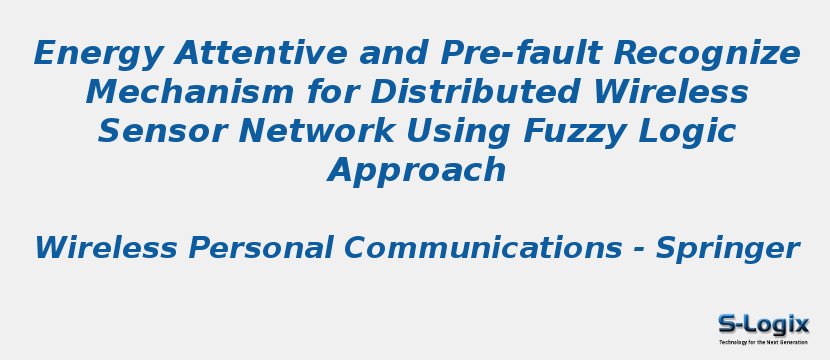Research Area: Wireless Sensor Networks
Wireless sensor networks (WSNs) have been transforming over recent years with development in the design of smart real-time applications. However, it presents numerous challenges in terms of fault-tolerant communication, low latency, scalability, and transmission efficiency. It is extremely difficult for WSNs to detect runtime faults since they are unaware of the internal processes at work within the sensor node. As a result, valuable sensed information cannot reach its destination and performance starts degrading. Towards this objective, the proposed mechanism applies a novel pre-fault detection mechanism based on a fuzzy rule-based method for multilevel transmission in distributed sensor networks. The proposed mechanism uses a fuzzy rule set to make routing decisions. A fuzzy decision rule set is proposed to perform routing based on the fuzzy fault count status of a node. The proposed mechanism assists in identifying the fault in advance and determining the optimal routing path to save energy and improve network performance. In accordance with the node fault status, the data transmission rate is finalized to prevent further energy consumption. The results demonstrated that the proposed mechanism performed well on judgment evaluation metrics like the energy dissipation ratio, throughput, packet loss rate and communication delay.
Keywords:
Author(s) Name: Roshani Talmale,M. Nirupama Bhat
Journal name: Wireless Personal Communications
Conferrence name:
Publisher name: Springer
DOI: 10.1007/s11277-021-09405-z
Volume Information:
